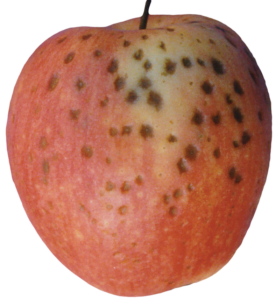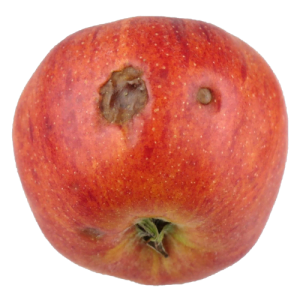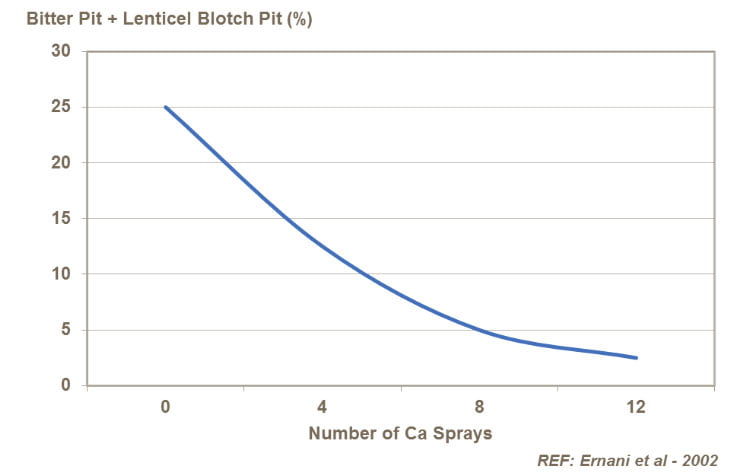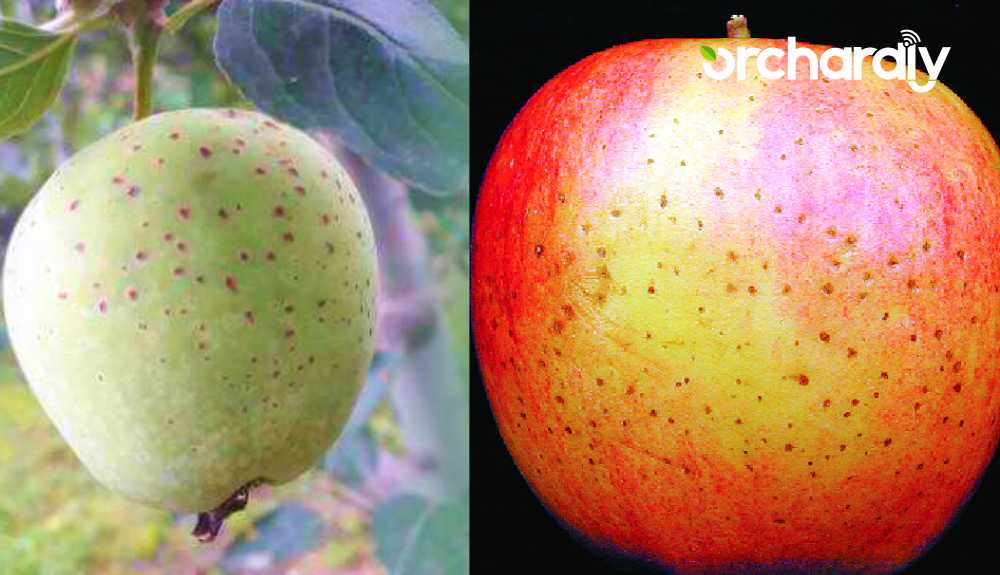Apples are not just a delicious snack; they are also fascinating subjects of study for scientists and researchers. However, apple growers face challenges in maintaining post-harvest fruit quality due to physiological disorders. These disorders, such as lenticel blotch pit, can significantly impact the marketability and shelf life of apples.
Research has shown that calcium (Ca) nutrition plays a vital role in the development and prevention of lenticel blotch pit. Studies, such as the one on ‘Fuji’ apple fruit, have highlighted the importance of proper Ca distribution and localization within the fruit to mitigate this disorder. Understanding the mechanisms behind Ca uptake and distribution can aid growers in implementing targeted nutritional strategies to enhance fruit quality.
Additionally, post-harvest practices significantly influence the occurrence of physiological disorders in apples. Factors such as temperature management during storage and transportation can either exacerbate or alleviate these issues. Cold storage, for instance, is commonly used to prolong the shelf life of apples. However, improper cold storage conditions can contribute to the development of physiological disorders.
To combat these challenges, growers must adopt holistic approaches to orchard management and post-harvest handling. This includes implementing proper nutrition management practices, optimizing storage conditions, and adopting preventative measures to minimize the incidence of physiological disorders.
By staying informed and proactive, apple growers can enhance fruit quality, reduce post-harvest losses, and meet consumer demands for high-quality produce. A few types of lenticel disorders are mentioned below:
Types of Lenticel Disorders

- Lenticel Breakdown: Also known as lenticel spot, this condition involves the degradation of lenticels, resulting in soft, discolored areas on the fruit surface. Lenticel breakdown is often associated with high humidity and poor air circulation. The flesh underneath the spots is not affected and does not show any discoloration.
- Lenticel Blotch or Blotch Pit: This disorder is characterized by dark, sunken, irregular spots on the fruit surface, often caused by localized calcium deficiencies, has similar symptoms on flesh as bitter pit- the flesh turns brown underneath the spot.
- Spray-associated Lenticel Issue: Spray-associated lenticel issues also contribute to physiological disorders in apple fruit. Exposure to certain chemicals during pesticide, insecticide or fertilizer applications can damage lenticels, leading to discoloration and affecting fruit appearance. Implementing careful spray practices and choosing appropriate chemicals can help mitigate these issues and maintain fruit quality.
- Lenticel Discoloration: Lenticels may become discolored due to various factors, including fungal infections, environmental stress or physiological imbalances, resulting in patches of dark or abnormal pigmentation on the fruit surface.
- Lenticel Enlargement: Excessive water uptake or physical damage due to excessive water uptake after a prolonged dry period can cause lenticels to swell or enlarge, altering the texture and appearance of the fruit skin.

Causes of Lenticel Blotch
- Climatic Factors: Lenticel blotch is more likely to appear during the growing season when high temperatures are combined with low soil moisture levels. These stimuli from the environment worsen physiological abnormalities, making apple more susceptible to the condition.
- High Humidity and Rainfall: Prolonged wet conditions facilitate the entry of microorganisms into the lenticels, causing blemishes.
- Inadequate Pruning: Poor pruning practices reduce air circulation within the canopy, creating a moist environment conducive to lenticel blotch development.
- Apple Cultivar Susceptibility: Some apple varieties are more prone to lenticel blotch than others. While breeding programs are working on developing resistant cultivars, susceptibility largely depends on the apple’s genetic makeup.
- Overuse of Nitrogen Fertilizers: Lenticel blotch development and aggravation are linked to excessive nitrogen fertilizer application. Although nitrogen is necessary for plants to flourish, too much of it can interfere with physiological functions and cause abnormalities in the growth and quality of fruits.
- Environmental Stress: Drought, extreme temperatures, and other environmental stresses can lead to dehydration and cracking of the fruit, damaging the lenticels. High heat can cause sunburn and scalding, further contributing to lenticel damage.
Management Strategies
The main method of controlling lenticel blotch is the use of calcium through soil amendments or foliar sprays. Calcium is essential for maintaining the integrity of cell walls and maintaining membrane stability, which helps fruits withstand the physiological abnormalities linked to this disease. Although there’s no direct cure for lenticel blotch, implementing best practices in orchard management can significantly reduce its occurrence:

- Pruning and Thinning: Regularly prune and thin the apple tree canopies to improve air circulation, reduce humidity, and allow faster drying of leaves and fruits after rainfall.
- Irrigation Management: Adjust irrigation schedules to avoid over-watering, especially during periods of high humidity. Drip irrigation systems are preferable over overhead irrigation to minimize excess moisture on foliage and fruits.
- Disease Control: Monitor and control diseases and pests to maintain overall tree health. An effective integrated pest management (IPM) plan and regular monitoring for fungal diseases can help.
- Fungicides: Certain fungicides can be used to manage lenticel blotch cause by infections. Consult local experts for specific recommendations and regulations.
- Calcium Treatments: Lenticel damage is mostly linked to calcium deficiencies. Calcium sprays or dips can improve fruit calcium levels and reduce the severity of lenticel damages. It is important to continue spraying right through to harvest for the best results. Studies have shown that calcium treatments are effective in reducing lenticel blotch in apples.
- Foliar Manganese: In trials, foliar manganese applied at least twice in the spring has proven to be effective at minimizing leaf drop and lenticel damage. This additional treatment can help maintain the overall health and appearance of the apples.
- Crop Load Management: Balance crop loads to prevent stress on the trees. Overloaded trees may produce fruit more prone to lenticel damage.
- Timely Harvesting: Harvest apples at the optimal time to minimize lenticel blotch. Overripe fruit is more susceptible to the disorder.
- Proper Storage: Handle and store apples correctly to maintain their appearance and prevent further development of lenticel blotch post-harvest.
Lenticel damages poses significant challenges to apple cultivation, primarily due to its adverse effects on fruit aesthetics. However, through the implementation of sound orchard management practices and targeted management strategies, growers can effectively mitigate the incidence and severity of this disorder. By prioritizing balanced crop nutrition and adopting proactive measures, growers can enhance fruit quality, marketability, and overall crop yield, thereby ensuring sustainable apple production practices for future generations. Care should be taken during the summers that the soil moisture levels are maintained.


